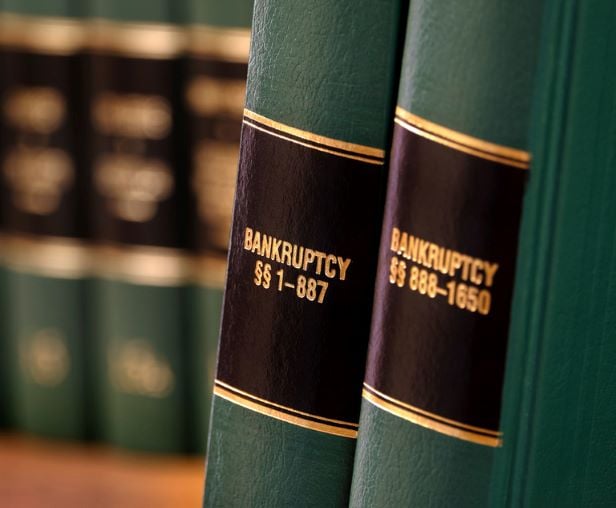Features

Closing 'Unacceptable Loopholes': How Sex Abuse Claimants Could Gain Power In Chapter 11 Bankruptcies
New federal legislation proposes sweeping changes to how bankruptcy courts handle child sexual abuse claims in Chapter 11 proceedings, with supporters claiming the process has become a way for debtors to silence victims and avoid liability.
Features

Seventh Circuit Applies Safe Harbor to Private Securities Transaction
"… [T]he term 'securities contract' as used in [Bankruptcy Code] §546(e) unambiguously includes contracts involving privately held securities," The Seventh Circuit held in Petr v. BMO Harris Bank, N.A.
Features

Ninth Circuit Bankruptcy Appellate Panel: 523(a) Discharge Exceptions Don't Apply to Corporate Debtors Under Subchapter V
In Lafferty v. Off-Spec Solutions, the U.S. Bankruptcy Appellate Panel of the Ninth Circuit held that the discharge exceptions under Section 523(a) do not apply to corporate debtors under Subchapter V of Chapter 11 of the Bankruptcy Code.
Features

Biotech Industry Bankruptcy Case Update: 'Zymergen' and 'Humanigen'
This Bankruptcy Case Update focuses on the recent biotech industry bankruptcy cases of Zymergen and Humanigen.
Features

So Far In 2024, Law Firms Are Using Bankruptcy As a Springboard for Profit
With broad hopes for countercyclical consistency and a nearly 120% uptick in Chapter 11 filings in February specifically, law firms seem ready to use restructuring work as a significant plank in a profitable 2024.
Features

Landmines In Bankruptcy Appellate Practice, Part III
When courts have made important exceptions in the past year, they have either added a gloss on the Judicial Code, corrected lawyers' errors, filled in statutory gaps, or clarified the relevant statutory language.
Features

Exploring Debt Restructuring Options for CRE Owners
In the dynamic landscape of real estate, commercial real estate owners often find themselves facing financial challenges that necessitate a strategic approach to debt management. In such cases, exploring debt restructuring options becomes a crucial consideration.
Features

A Strategic Guide for Lenders to Navigate Anticipated Distressed Loan Fallout
The steps outlined in this article offer a strategic guide for lenders, empowering them to navigate the complexities of loan workouts and enforcement actions with resilience and foresight.
Features

Third Circuit: Bankruptcy Code Mandates Appointment of Examiner In Chapter 11 Cases
The Third Circuit recently held in 'In re FTX Trading' that the plain text of Section 1104(c)(2) mandates the appointment of an examiner under the specified conditions set forth. As a result, the FTX decision will carry significant implications for large and medium-sized bankruptcy cases.
Features

Bankruptcy Court Ruling of Cannabis-Related Claims Not Violation of Controlled Substance Act, California District Court Rules
The Central District of California court held that a bankruptcy court's administration of cannabis-related state court claims against a debtor's estate is not a violation of the Controlled Substances Act.
Need Help?
- Prefer an IP authenticated environment? Request a transition or call 800-756-8993.
- Need other assistance? email Customer Service or call 1-877-256-2472.
MOST POPULAR STORIES
- Use of Deferred Prosecution Agreements In White Collar InvestigationsThis article discusses the practical and policy reasons for the use of DPAs and NPAs in white-collar criminal investigations, and considers the NDAA's new reporting provision and its relationship with other efforts to enhance transparency in DOJ decision-making.Read More ›
- The DOJ's New Parameters for Evaluating Corporate Compliance ProgramsThe parameters set forth in the DOJ's memorandum have implications not only for the government's evaluation of compliance programs in the context of criminal charging decisions, but also for how defense counsel structure their conference-room advocacy seeking declinations or lesser sanctions in both criminal and civil investigations.Read More ›
- The DOJ's Corporate Enforcement Policy: One Year LaterThe DOJ's Criminal Division issued three declinations since the issuance of the revised CEP a year ago. Review of these cases gives insight into DOJ's implementation of the new policy in practice.Read More ›
- Don't Sleep On Prohibitions on the Assignability of LeasesAttorneys advising commercial tenants on commercial lease documents should not sleep on prohibitions or other limitations on their client's rights to assign or transfer their interests in the leasehold estate. Assignment and transfer provisions are just as important as the base rent or any default clauses, especially in the era where tenants are searching for increased flexibility to maneuver in the hybrid working environment where the future of in-person use of real estate remains unclear.Read More ›
- Developments in Distressed LendingRecently, in two separate cases, secured lenders have received, as part of their adequate protection package, the right to obtain principal paydowns during a bankruptcy case.Read More ›
